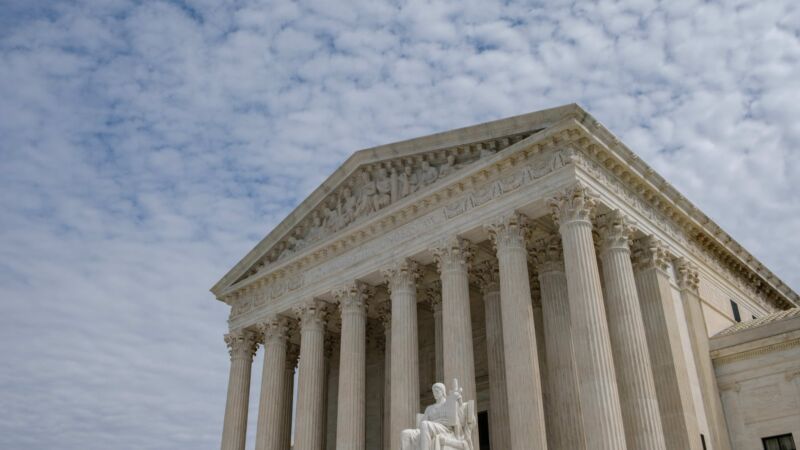In a landmark decision that has sent ripples through the legal and tax communities, the recent Loper Bright ruling has the potential to reshape the landscape of federal tax in significant ways. As businesses and individuals alike scramble to understand the implications of this pivotal case, Checkpoint turns to an expert who can shed light on the complexities and consequences of the ruling.
Checkpoint had the privilege of speaking with Robert J. Kovacev, a 20-year veteran in federal tax controversy and tax litigation and a member of the firm, Miller & Chevalier. Prior to joining private practice, Kovacev was a senior litigation counsel in the Tax Division of the U.S. Department of Justice (DOJ), where he was lead trial counsel for the IRS in some of the largest and most complex civil tax cases in the nation. With a distinguished career marked by high-profile cases and a reputation for insightful analysis, Kovacev brings a wealth of knowledge and a unique perspective to our discussion.
Overview of the Chevron doctrine
The Chevron doctrine, also known as the Chevron deference, comes from a 1984 Supreme Court case (Chevron vs. National Resource Defense Council, 467 U.S. 837 (1984)). In this case, Chevron contested regulations issued by the Environmental Protection Agency (EPA). “In essence, the Chevron doctrine provides a framework for determining whether a statute is substantively valid, and it has been the standard approach for the past 40 years,” Kovacev said.
Chevron doctrine two-part test. The two-part test first examines if there is a direct conflict between the statute and the issued regulation. If there is a conflict between the statute and the regulation, the regulation would be invalid. However, Kovacev explained that if there is an ambiguity and there is no direct conflict, the court would defer to the agency’s regulations so long as their interpretation is reasonable.
Purpose of agency regulations. In the case of the Internal Revenue Code (IRC) and Treasury regulations, the agencies may add additional requirements to a law. For example, Congress may pass a law providing for a tax credit, but the IRS would promulgate regulations that requires a form to be filed to claim the credit or require that certain parameters be met to prevent abusive practices or for the ease of administration. However, these requirements were not set forth in the statute. Kovacev explained that under the Chevron doctrine, courts examine whether the requirements under agency regulations would be a reasonable interpretation.
Guidance vs. regulations. Kovacev described a “pyramid” of agency guidance. The IRC would sit at the top of the pyramid, followed by Treasury regulations because the IRC and Treasury regulations “have the force of law,” and are issued under the Administrative Procedures Act (APA). The APA requires notice and an opportunity to comment. Below the IRC and Treasury regulations would be a notice, revenue ruling, revenue procedure, or even FAQs, because none of these sources have the force of law. Rather, “those are basically the IRS making… telling their position on whatever that issue is and say, ‘OK, this is what we think the rule should be’ or ‘this is how we’re going to administer it.’ But it’s not law,” Kovacev explained. The Chevron doctrine did not apply to these sources since “they don’t have the force of law. It’s just whatever [is] customary or not customary.”
Loper Bright significance
Kovacev discussed the shift in legal interpretation from the Chevron doctrine to the Loper Bright standard. The Loper Bright ruling overturns the Chevron doctrine. Kovacev clarified that under Loper Bright, when a court reviews a regulation to determine its validity, the court will look at the statutory language and use its own independent judgment. If the regulation exceeds the bounds of the statute, it’s deemed invalid. If it doesn’t, it’s considered valid.
Retroactive nature of Loper Bright. Kovacev said that the Supreme Court has stated that they will not revisit prior rulings where a regulation was determined valid under Chevron, particularly if the cases have established precedent. However, Kovacev noted that any cases “in the pipeline now,” including older regulations, are fair game and the Loper Bright standard would apply.
Tax laws poised for courtroom challenges
When asked what regulations may be ripe for challenge due to the Loper Bright ruling, Kovacev offered several thoughts:
- Regulations related to the Tax Cuts and Jobs Act: Kovacev observed that since the Tax Cuts and Jobs Act (TCJA) was enacted in 2017, the IRS has issued numerous regulations over the past five years. Kovacev noted that many of these regulations are currently being challenged either in IRS exams or in court. Cases like the Liberty Global case in the Court of Appeals for Tenth Circuit and the FedEx case are examples of such challenges.
- Regulations related to the Inflation Reduction Act: Kovacev also mentioned the Inflation Reduction Act and various alternative energy credits for which the IRS is issuing regulations may also be subject to challenges as a result of Loper Bright.
- Other regulatory areas: Other areas like the Corporate Alternative Minimum Tax (CAMT) and stock buybacks are likely to see their regulations scrutinized and potentially challenged. Further, Kovacev remarked that “[t]here are a lot of areas where the IRS has relied on regulations to fill in a lot of gaps.” Particularly, Kovacev noted that Code Sec. 482, the transfer pricing statute, is two sentences long, however, the regulations that have been issued are an inch thick. “So, it’s fair to say that taxpayers will be examining transfer pricing regulations very closely,” Kovacev added.
- Employee Retention Credit: Kovacev pointed out that while the IRS released a flurry of guidance related to the Employee Retention Credit (ERC), the IRS has not issued regulations on their positions. For example, the IRS continues its moratorium on new ERC claims processing, but the actions do not have the force of law, Kovacev explained. However, if the IRS should release regulations, such as OSHA statements, which are not government shutdown orders for ERC claim purposes, Kovacev believes that the interpretation would be subject to challenge.
Heightened litigation and statutory clarity
Critics of the Loper Bright ruling believe it will open the floodgates to litigation. Kovacev agreed and said: “There will be an increase in challenges to tax regulations, without question. This will be exacerbated by a recent IRS policy decision to deprive the IRS Office of Independent Appeals of jurisdiction to consider whether a regulation is invalid. This deprives taxpayers of a valuable venue for settling these disputes out of court. Perhaps the IRS may be motivated to reconsider that decision after Loper.”
However, Kovacev believes that despite the impression the agency has limited resources, he thinks it is unlikely that the IRS “will walk away from these cases” and noted that the “IRS places a high priority on defending its regulations and it will expend whatever resources it takes.”
Kovacev offered some thoughts on congressional action after the Loper Bright ruling, noting that much will depend on November election outcomes. Congress could enact a statute instructing courts to defer to the IRS’s interpretation of tax code provisions, which could limit the applicability of Loper Bright or Congress may not be inclined to help the IRS out of any difficulties it creates by writing regulations that push the boundaries. Either way, Kovacev believes Congress will need to be more explicit if it wants to give the IRS a broad scope of interpretation in issuing regulations. Further, he said that Congress will need to be more precise in drafting statutes in the future if they want specific issues to be covered rather than rely on the IRS to fill in the gaps.
Immediate actions for employers post-ruling
Kovacev suggests that taxpayers should review their tax positions in light of the shift from the Chevron doctrine to the Loper Bright standard. Taxpayers should review the existing tax positions and determine what regulations they may disagree with, particularly where a tax benefit has been denied or there is a significant related administrative burden. Also, taxpayers that have been complying with regulations under the belief it would not withstand a challenge under the Chevron doctrine, may reconsider since the Loper Bright standard opens up new opportunities. Kovacev said: “Look back to see is there an issue where there’s a regulation which is hurting us. We are following it because we didn’t think we had a chance to challenge it because of Chevron. Now things are different.”
Final thoughts
Kovacev said that Congress may grant a tax benefit that they fully intend taxpayers to take advantage of, however, “[the] Treasury and the IRS will come in and take that benefit away by adding additional restrictions or requirements or hurdles that Congress never intended and never included in the statute.” The Loper Bright ruling gives taxpayers an opportunity to challenge these regulations on an even playing field. This could allow taxpayers to obtain the tax benefits that Congress originally intended, without the additional statutory interference imposed by the Treasury and IRS. This represents a significant shift in the balance of power in tax law interpretation and application.






